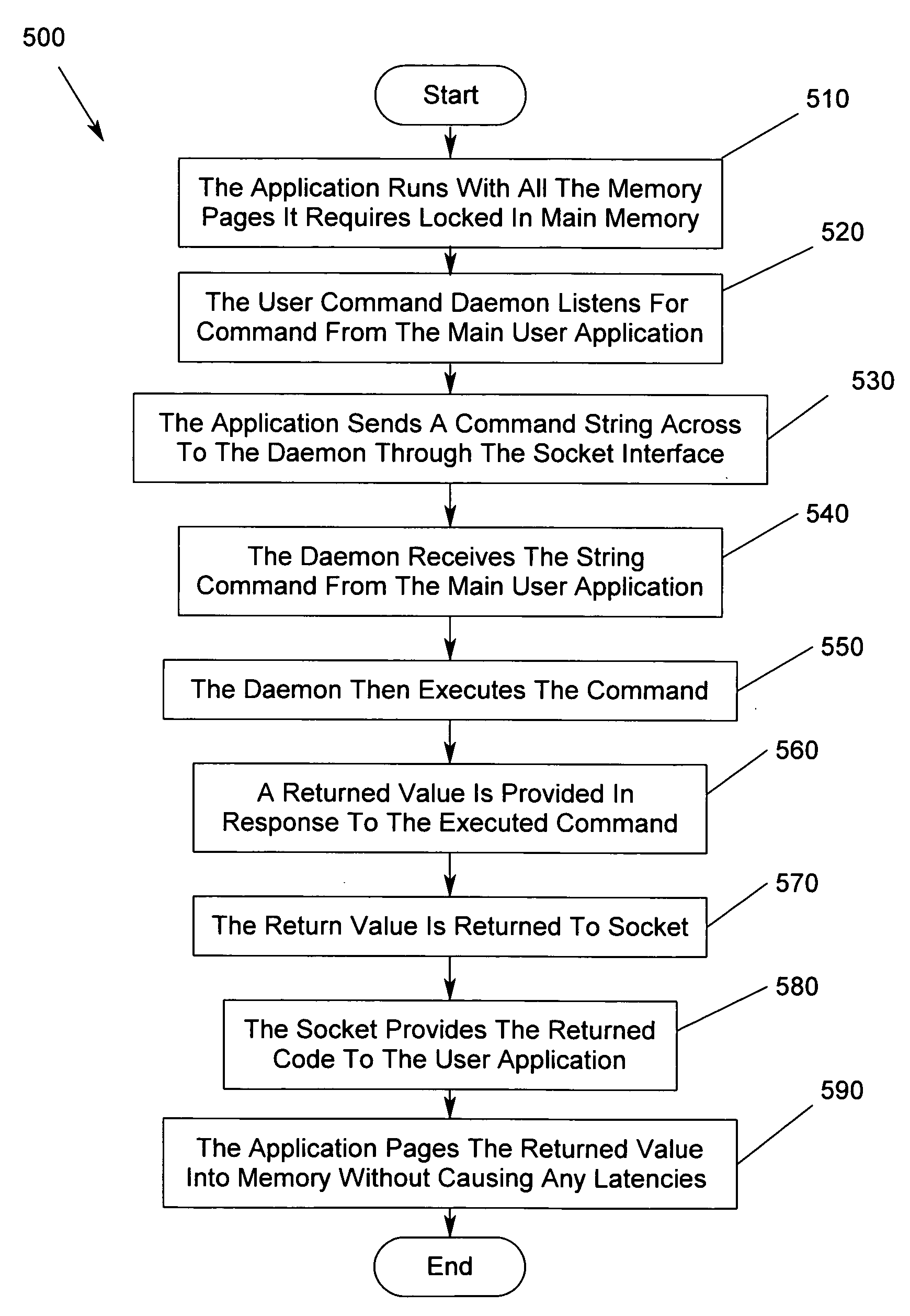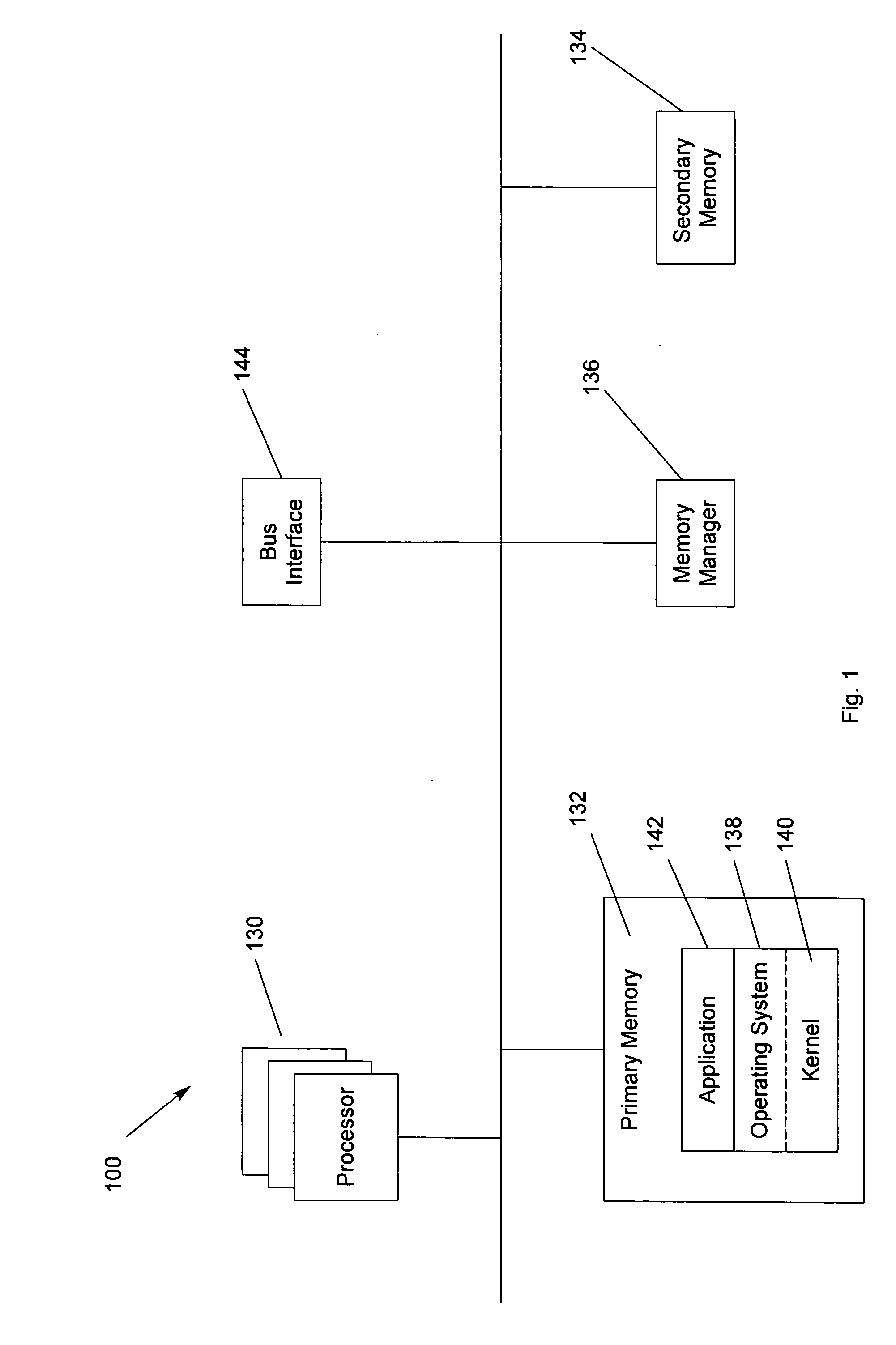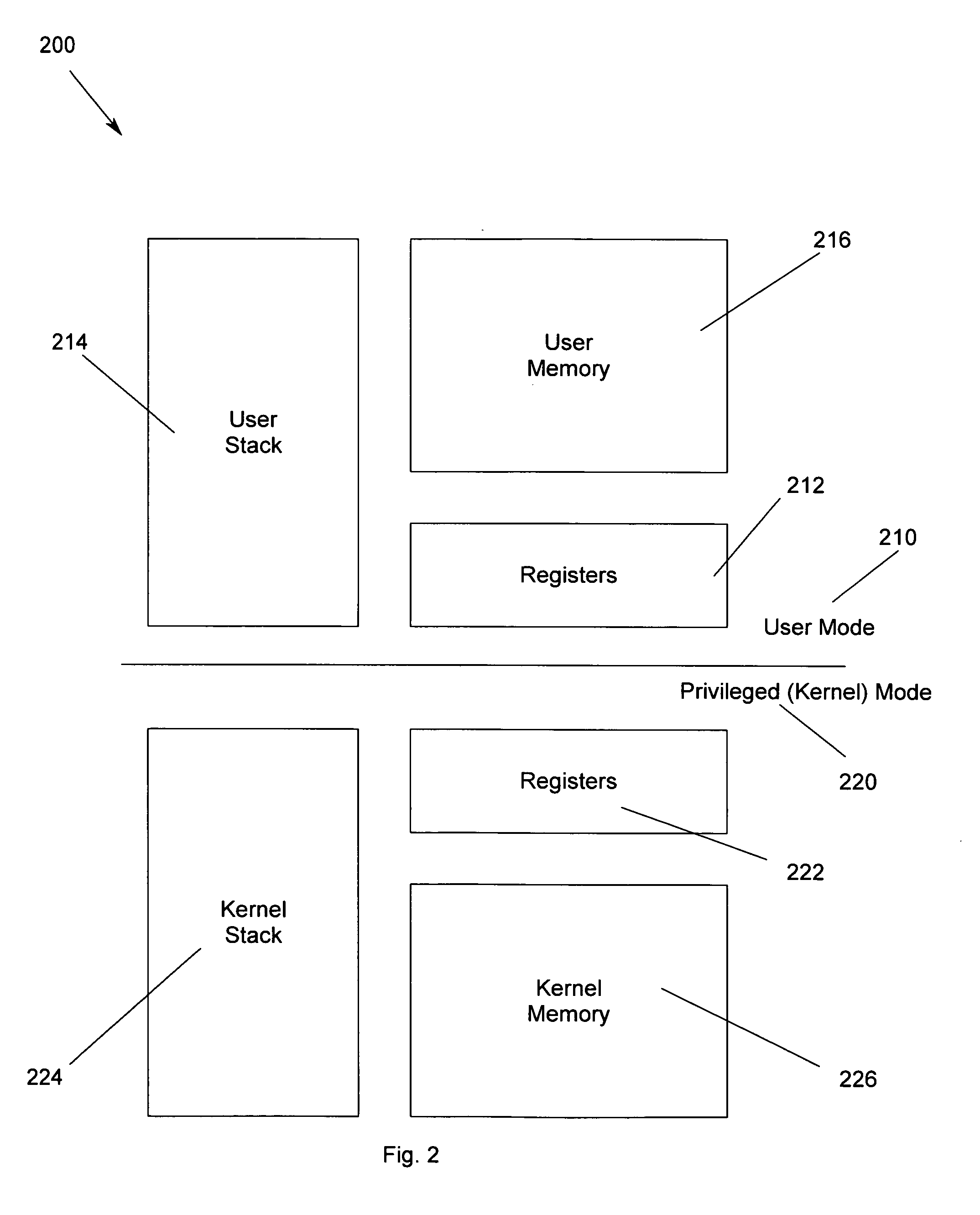Method, apparatus and program storage device for preserving locked pages in memory when in user mode
a program and user mode technology, applied in the field of computer operating systems, can solve the problems of costing a number of cpu cycles, a lot of time, and a large amount of time to switch the context of a full-fledged multi-threaded process,
- Summary
- Abstract
- Description
- Claims
- Application Information
AI Technical Summary
Benefits of technology
Problems solved by technology
Method used
Image
Examples
Embodiment Construction
[0026] In the following description of the embodiments, reference is made to the accompanying drawings that form a part hereof, and in which is shown by way of illustration the specific embodiments in which the invention may be practiced. It is to be understood that other embodiments may be utilized because structural changes may be made without departing from the scope of the present invention.
[0027] The present invention provides a method, apparatus and program storage device for preserving locked pages in memory when in user mode. A “system(cmd)” is executed in a different process context, in which case the memory pages locked by a real-time application remain intact and the returned value provided in response to the executed command is provided to the memory with causing any latencies.
[0028]FIG. 1 illustrates a block diagram of a computer system 100 according to an embodiment of the present invention. In FIG. 1, the computer system 100 includes one or more processors 130, whic...
PUM
 Login to View More
Login to View More Abstract
Description
Claims
Application Information
 Login to View More
Login to View More - R&D
- Intellectual Property
- Life Sciences
- Materials
- Tech Scout
- Unparalleled Data Quality
- Higher Quality Content
- 60% Fewer Hallucinations
Browse by: Latest US Patents, China's latest patents, Technical Efficacy Thesaurus, Application Domain, Technology Topic, Popular Technical Reports.
© 2025 PatSnap. All rights reserved.Legal|Privacy policy|Modern Slavery Act Transparency Statement|Sitemap|About US| Contact US: help@patsnap.com



